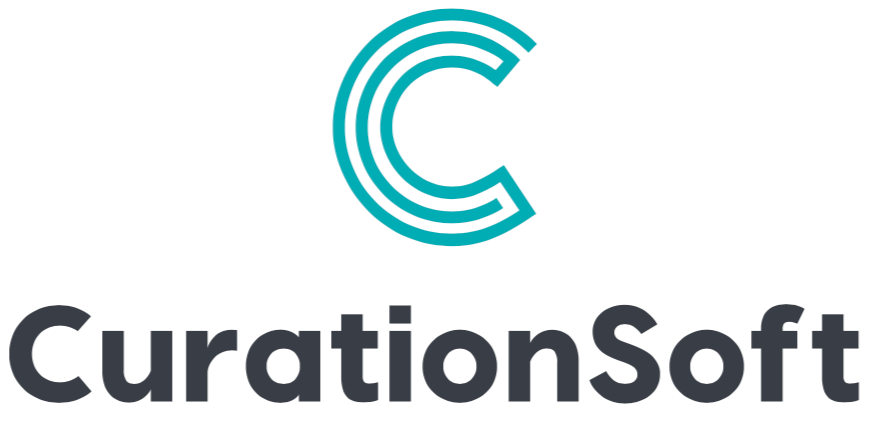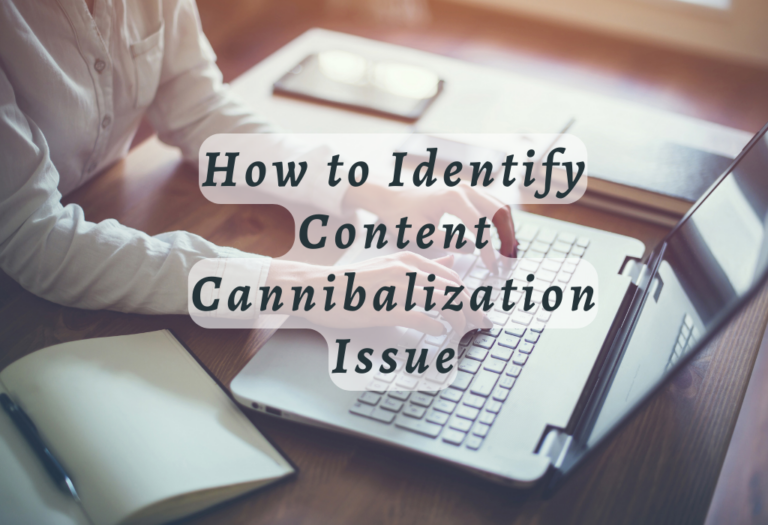Maximizing Your Content Writing Potential Using AI Writing Tools
Artificial Intelligence (AI) is revolutionizing the method of creating content. AI writing tools are becoming increasingly popular among marketers looking to optimize their SEO and improve their content marketing efforts. According to a stat, 40 % of businesses claim that AI writing tools has decreased their operational costs.
From generating ideas for blog posts to optimizing headlines, AI writing tools can help you save time and effort while creating quality content that engages your audience. In this article, we’ll explore what AI writing tools are and how to use them effectively. We have also provided a quick breakdown of the best practices to reap the benefit of these powerful technologies and common mistakes to avoid when working with them.

What is AI Writing Tools?
AI writing tools are computer programs that use artificial intelligence (AI) to help writers create content. AI-powered writing tools are used for various tasks, including researching topics, generating ideas, and editing text. They provide an efficient way to produce high-quality content quickly and accurately.
AI writing tools are software applications designed to automate the creation process of written content using natural language processing (NLP). These tools utilize algorithms that analyze data from various sources in order to generate original text or suggest edits and corrections based on the user’s commands.
Benefits of Using AI Writing Tools
AI has become the key tool in a plethora of offices by the end of 2022. A report shows that 91.5% businesses invest in AI continuously. Need help with the use of AI writing tools? Here are some key benefits of AI that will revolutionize your writing experience:
- The primary benefit of using these automated writing solutions is their ability to save time while producing accurate results.
- They can help reduce errors due to human error and ensure consistency across all pieces of content produced by the same writer or team.
- They allow users to focus more on creativity instead of worrying about grammar mistakes or other technical issues when crafting their work.
What are some common types of AI writing tools?
Several types of AI writing tools are available depending on your needs as a writer or marketer. Following are some common examples:
AI Writing Tools is an invaluable resource for marketers looking to create content quickly and efficiently. Learning how to use them effectively can take your content marketing and SEO strategies to the next level.
Key Takeaway: AI writing tools can save time and produce accurate content while reducing errors. Benefits include spellcheckers, auto-correctors, topic research assistants, automated summarization systems, and personalized feedback.
How to Use AI Writing Tools Effectively
AI writing tools are a breakthrough in the field of content writing. However, one must learn how to give AI commands properly to get the desired results. Here is a complete guide on the use of AI for writing:
1. Setting Up Your AI Writing Tool
Before you can start using an AI writing tool, it’s essential to take the time to set up the device correctly. It involves providing information about your target audience, desired tone of voice, and any relevant keywords or topics that must be present in generated content. It’s also a good idea to review any settings related to grammar and spelling checks before getting started.
2. Creating content with an Authoritative Tone of Voice
Once you have set up your AI writing tool, you can begin creating content. It’s essential to provide clear instructions on how each piece should sound to ensure an authoritative tone of voice in your content. For example, if you want the content to be more conversational, ensure this is reflected in your instructions for the AI writing tool.
3. Optimizing the content for SEO
When generating content with an AI writing tool, optimizing each piece for search engine optimization (SEO) purposes is essential. It includes incorporating relevant keywords into titles and headings throughout the article or blog post while maintaining a natural flow of language. Additionally, consider adding internal links between different pieces of content within your website or blog whenever possible; this will help boost overall SEO performance over time.
Using AI writing tools effectively requires thoughtful planning and optimization. In the next section, we’ll discuss best practices for using these tools to create high-quality content with a professional tone of voice while optimizing for SEO purposes.
Key Takeaways: Although AI has made writing more accessible, it requires giving proper commands to get your desired content. It will help if you preset the AI tool to get quality content and provide appropriate instructions to AI for generating authoritative and SEO content.
Practical Tips for Using AI Writing Tools
AI writing tools are becoming increasingly popular among marketers as they offer a convenient and efficient way to generate content. However, it’s essential to understand how to use these tools effectively to maximize their potential. Here are some best practices for using AI writing tools:
1. Researching Keywords and Topics Beforehand
One of the most critical steps when creating content with an AI writing tool is researching keywords and topics beforehand. It will help ensure that your generated content is relevant and optimized for search engine optimization (SEO). The best practice is to create a list of related terms or phrases to incorporate into your generated content.
2. Quality Assurance Checks after Generating Content
Once you have generated your content, performing quality assurance checks before publishing it online is essential. It includes checking for grammar errors, typos, plagiarism issues, factual accuracy, etc. Additionally, ensure that the tone of voice in the generated content matches what you want readers to experience.
3. Incorporating Human Touch into Automated Content Creation Processes
While automated processes can help generate high-quality content quickly and efficiently, incorporating the human touch into the process can add value by ensuring accuracy and authenticity in the final product. For example, having someone review the generated output before publishing can help identify areas where additional editing is required or if more research is needed on specific topics mentioned.
Overall, following these best practices when using AI writing tools will help ensure you get maximum value out of them. Moreover, avoiding common mistakes such as needing more time to understand their capabilities or relying too heavily on automation without adding a human touch into the mix will take your writing experience to another level. In this way, you can create compelling pieces of digital marketing material that resonate with readers and helps improve SEO rankings at the same time.
Key Takeaway: When using AI writing tools, it’s essential to 1. Research keywords and topics beforehand; 2. Perform quality assurance checks after generating content; 3. Incorporate a human touch into automated processes for accuracy and authenticity.
Common Mistakes to Avoid When Using AI Writing Tools?
Using AI writing tools is the wisest strategy to save time and effort when creating content. However, it’s essential to understand the capabilities and limitations of these tools to get the most out of them. Here are some common mistakes that marketers should avoid when using AI writing tools:
1. Not Taking the Time to Understand the Tool’s Limitations
Marketers need to take their time researching different AI writing tools before making a decision on which one they will use. Each tool has its own set of features, so users need to understand what each tool offers in terms of content creation capabilities as well as any potential limitations or restrictions.
2. Not Checking Generated Content for Grammatical Errors or Plagiarism Issues
While many AI writing tools have built-in grammar checks, it is still essential for users to double-check generated content before publishing it online. Additionally, since some AI writing tools rely on templates or existing sources of information, there may be an increased risk of plagiarism if not checked properly.
Although automated content creation can help save time and effort, relying too heavily on automation without adding a human touch can lead to lacklustre results. Marketers should strive for quality over quantity by manually editing generated content with their unique style and voice to create more engaging pieces that stand out from competitors’ work.
By understanding the capabilities and limitations of AI writing tools, avoiding errors and plagiarism issues, and adding realism to automated content creation, marketers can ensure that their use of these tools is compelling.
Key Takeaway: AI writing tools can save time and effort, but users should take the time to understand each tool’s capabilities and limitations, check generated content for errors or plagiarism issues, and add a uniquely mortal tinge when editing.
The Future of AI Writing Tools
The future of AI writing tools is a hot topic in digital marketing. Automated content creation technology has come a long way in recent years and will only improve. Predictions for the evolution of this technology include increased accuracy, more natural-sounding text, and faster generation times. As AI writing tools become increasingly sophisticated, they could have significant implications for traditional writers, editors, and digital marketing strategies. Here are some prospects for AI Writing tools:
1. Predictions for the Evolution of Automated Content Creation Technology
With advances in machine learning algorithms and natural language processing (NLP), automated content creation will become more accurate. AI writing tools can generate high-quality content with fewer errors than ever before. Additionally, these tools are expected to produce more natural text by incorporating tone of voice and emotion into their output. Finally, generation times are expected to decrease significantly due to improved computing power and optimization techniques that developers use.
2. Potential Impact on Traditional Writers and Editors
The emergence of automated content creation technologies could reduce demand for traditional writers and editors who specialize in creating written content from scratch or editing existing pieces manually. However, some experts believe that there may still be opportunities available for human professionals within this field if they can find ways to add value beyond what machines can provide – such as creative ideas or unique perspectives – while leveraging automation where appropriate.
AI writing tools offer many advantages when optimizing digital marketing campaigns; however, marketers should rely on something other than automation. For example, using an AI tool alone might result in generic copy that lacks personality or fails to capture your target audience’s attention effectively. However, combining automated processes with manual input from experienced professionals can help ensure higher-quality results overall.
As AI writing tools continue to become more sophisticated, marketers must consider how they can best utilize this technology to create engaging and optimized content for search engine visibility. With the right tool selection, one can reinvigorate digital marketing strategies with automated content creation.
Key Takeaway: AI writing tools are becoming increasingly sophisticated, offering higher accuracy and faster generation times. They can help optimize digital marketing campaigns; however, marketers should still add a human touch whenever possible to ensure high-quality results.
What are some key factors to consider while investing in an AI tool?
The following are some essential factors while selecting an AI tool:
How to Choose the Right AI Writing Tool?
Choosing the right AI writing tool for your needs is essential to achieving success with automated content creation. Before investing in an AI writing tool, it’s necessary to understand your unique requirements and goals.
1. Analyze your budget
Comparing different features and pricing options will find a solution that meets your needs without breaking the bank. Additionally, evaluating user reviews and testimonials from other users can provide valuable insight into the effectiveness of a particular AI writing tool.
2. Consider the limitations of the tool
When researching potential solutions, pay close attention to any limitations or restrictions associated with each option. For example, some tools may only be compatible with certain types of content, while others may have limits on how much text they can generate at once. Understanding these parameters will ensure that you select an AI writing tool that fits within your workflow and produces results that meet your expectations.
3. Check the credibility of the service provider
It’s also important to consider the level of support offered by each provider before making a purchase decision. Many companies provide customer service via phone or email as well as online tutorials and resources for getting started quickly with their product offerings. Access to knowledgeable staff familiar with the ins and outs of using an AI writing tool makes all the difference when it comes time to troubleshoot issues or optimize performance down the line.
4. Review different tools before making a significant investment
Finally, review any additional services potential vendors provide, such as training programs or ongoing maintenance plans, which could prove beneficial if used correctly over time. Doing so will ensure that you choose an AI writing tool explicitly tailored to meet your individual needs now and in the future.
By taking the time to understand your unique requirements and goals, comparing different features and pricing options, and evaluating user reviews and testimonials from other users, you can ensure that you select the right AI writing tool for your needs.
Key Takeaway: When selecting an AI writing tool, consider factors such as budget, features, scalability and compatibility. Also, review user reviews and support services offered by the vendor to ensure a good fit for your needs.
What are the drawbacks of using AI?
Even though each AI writing engine is unique, most of them have glaring flaws. These consist of the following:
1. Factual Correctness
Most AI writers are excellent at putting words and phrases together, but they can’t tell if a statement is true or false in terms of facts. AI engines are constrained to the previously gathered knowledge since they cannot conduct their research. As a result, there is no assurance of accuracy when information is generated.
AI authors encounter their constraints, just as humans cannot know everything about everything. The fact that most deep learning models don’t include a research component means that the information they produce sometimes is readable but only partially true. These engines advertise as “writing helpers,” yet they still need users to modify their work.
2. A Lack of Understanding of A Brand’s Essence Or Strategy
Artificial intelligence engines won’t be able to comprehend the goals or vision of your company. The culture and values of your firm cannot be taught to AI through paperwork or articles. As a result, produced content could not accurately capture the character of a brand and might come out as impersonal.
Additionally, AI is unable to comprehend the strategy of a brand. As a result, an article’s tone and focus might not be appropriate for its target readership or subject. For instance, an AI engine may produce blog entries with content catered to a salesperson’s audience but written in a way that better appeals to managers. AI copywriters create less effective content since they are unfamiliar with the brand rules and targeted personas. AI may accidentally violate brand rules due to its incapacity to comprehend a business’s strategy.
Similarly, AI finds it challenging to produce articles with a high effect that calls for actual knowledge, especially business-specific insights.
3. Bias
AI engines can fall victim to the same pitfalls as people, such as echo chambers that foster prejudices and narrow viewpoints. Deep learning models might accidentally develop underlying biases based on the information they ingest since they are trained to read articles and learn to write based on them. While most cases are frequently subtle, GPT-3 received widespread condemnation for its anti-Islamic undertones.
Right now, this field is advancing quite quickly. Project managers should, however, thoroughly examine the substance of their AI until the issue is reduced.
4. A Challenge to Control
Given their numerous shortcomings, it may already be clear that AI authors may be challenging to comprehend and manage. Artificial intelligence algorithms are effectively “black boxes” for developers that no one fully understands. It is hard to make improvements since developers cannot inquire why deep learning models made the choices they did, unlike human authors. It is complicated to make language models write with detail in terms of subject, tone, and diction without the capacity to provide and receive feedback.
Separate AI systems, which are in charge of editing created material and giving the models feedback, are being developed to address this disadvantage.
FAQs
Conclusion
In conclusion, using AI writing tools can be a great way to streamline your content marketing and SEO efforts. They can help you save time while still producing high-quality content that meets the needs of your target audience. When used correctly, AI writing tools can provide an efficient and effective solution for creating compelling copy quickly and easily. However, it is crucial to understand how these tools work to use them effectively and avoid common mistakes. To make it simple, AI can serve as a writing assistant, and we should not become entirely dependent on it. By following best practices when using AI writing tools, marketers can ensure they get the most out of their investment in this technology.
Are you looking for solutions to help improve your content marketing and SEO? Look no further! Curationsoft provides AI-powered writing tools that can quickly and efficiently automate creating, optimizing, and publishing high-quality content. With our advanced artificial intelligence capabilities, we’ll take care of all the hard work to help you focus on what matters most – reaching your target audience with great content. Try us today – unlock a new level of productivity in digital marketing!






